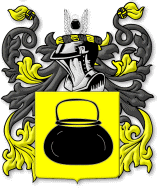 |
 |
One of these German families, the Wenks, first arrived in "the best poor man's country" during the second wave, sailing from Baden.
The family name traces back almost a thousand years in Europe. Until 1100 AD, most people in Europe had only one name (in fact this is still true in some scattered areas). But as the population began to grow in ever-expanding towns and villages, there needed to be a way to differentiate between all of the Johns, Williams and Roberts living in the same area, so surnames slowly evolved to tell everybody apart. For instance, if the tallest William in town was called "William the long fellow," then ultimately he became William Longfellow. It was also common to select a term indicating the person’s location or occupation. So "John who lives by the apple orchard," became John Appleby.
The Wenk family first came from Bavaria, where the family was connected with the many tribal conflicts of the area throughout its long history.
Variations on the name include Wenckh, Wenck, Wening, Weniger, Wenin, Wenig, Wenisch, Wenk, Wenger, Wenge, Weining, Wiening, Weuning, Wauning and many more, as well, which means that it derives from any number of sources. The name could derive from the Low German and Frisian personal name Weneke, a short form of any of the compound names beginning with the Old High German element wini (‘friend’). But sometimes it was used as a topographic name for someone who lived by a turning or bend, as the Middle High German wenke. Then there's the Middle Low German wenneke or ‘wide woolen dress’, hence it could have been an occupational name for a maker or seller of such garments. Hopefully our family doesn't derive from the Middle High German nickname wenken, meaning ‘to stagger or waver’, probably applied to someone with a peculiar gait, or to a drinker, or to someone who was indecisive (although all three could apply to this writer).
On the family coat of arms, the blue in the family crest is the color of loyalty and truth; the yellow stands for generosity. The squared and quartered shield features two griffins, signifying the property of a valorous soldier who "dared all dangers, and even death itself, rather than become captive." The two six-pointed mullets point to a Divine quality bestowed from above. The panache of feathers symbolizes willing obedience and serenity, and the closed helmet, in profile beneath, denotes an esquire or private gentleman.
To read all about our loyalty, truthfulness, generosity, valor, daring, Divinity, willing obedience and serenity, and follow our ancestors from the Black Forest of Germany, to the wilds of 19th Century Michigan, to the weirdness of 21st Century California, click on the chapters below:

CHAPTER 2: FREEDOM IN FREEDOM, 1850 - 1950
CHAPTER 3: THE WENK FAMILY TODAY, 1950 - PRESENT

APPENDIX A: CENSUS REPORTS, 1870 - 1930
APPENDIX B: FAMILY TIMELINE
PLUS GENEALOGIES OF THESE FINE RELATED FAMILIES:
Click on each Coat of Arms to read a family history, and our lineage to that family
Music: "Shenandoah," by Dean Shostak
.gif)
.gif)
.gif)
.gif)
.gif)
.gif)
.gif)
.gif)
.gif)
.gif)
.gif)
.gif)
.gif)
.gif)
.gif)
.gif)
.gif)
.gif)

.gif)
.gif)

.gif)
.gif)
.gif)
.gif)
.gif)


.gif)
.gif)
.gif)
.gif)
.gif)
